 |
 |
 |
| |
Increased Phenotypic Susceptibility to Etravirine in HIV-1 with NRTI Resistance
|
| |
| |
Reported by Jules Levin
17th HIV Drug Resistance Workshop
June 10-14, 2008
Sitges, Spain
J Benhamida, E Coakley, NT Parkin, C Chappey
Monogram Biosciences,
South San Francisco, CA USA.
AUTHOR CONCLUSIONS
Resistance to NRTIs is associated with increased etravirine susceptibility, causing hyper-susceptibility when NNRTI resistance mutations are absent or few, and reducing the level of resistance in combination with multiple NNRTI mutations.
The clinical relevance of this phenomenon is unknown but deserves further study, and may impact the derivation of genotype algorithms for prediction of reduced etravirine susceptibility.
BACKGROUND
Increased susceptibility to the non-nucleoside RT inhibitors (NNRTIs) efavirenz (EFV), nevirapine (NVP) and delavirdine (DLV), associated with mutations selected by nucleoside RT inhibitors (NRTIs), has been previously reported and has been shown to have clinical benefit in some cases1-4.
The effects of NRTI resistance-associated mutations (NAMs) on susceptibility to etravirine (ETR), the most recently approved NNRTI, are unknown.
METHODS
The median fold-change in etravirine IC50 (MFC) of groups of viruses lacking NNRTI resistance-associated mutations RAMs) with ( n=661) or without n=1576) NAMs was determined.
Samples had been submitted for routine resistance testing and were subtype B.
Hypersusceptibility (HS) was defined as FC <0.4.
NAMs were defined as M41L, K65R, D67N, T69X, K70E/R, L74I/V, V75A/M/S/T, Y115F, Q151M, M184I/V, L210W, T215F/Y, and K219X (X =any non-WT amino
acid). In addition V118I and H208Y were considered based on previous associations with NNRTI HS (5).
NNRTI mutations were defined as A98G, L100I, K101E/P, K103N/S, V106A/M, Y181X, Y188X, G190X, P225H, F227L, M230L, and P236L
Fold change distributions between groups were compared by one-way ANOVA using the Kruskal-Wallis non-parametric test with Dunn's correction for multiple comparisons (GraphPad Prism 5.0).
RESULTS
(Note: differences compared to abstract due to larger data set and
treatment of mixtures)
When present as the only NAM, V118I, M184V, and T215Y were significantly associated with reduced ETR MFC (Table 4A).
Groups of viruses lacking NNRTI mutations containing various NAMs (often in combination with others) demonstrated varying degrees of increased etravirine susceptibility (Tables 4B and 7). Statistically significant associations were observed for M41L, D67N, T69D/N, K70R L74I/V V118I M184V H208Y L210W, T215F/Y, and K219N/Q/R.
In combination with 0 or 1 NNRTI mutations, ETR FC decreased with increasing number of NAMs. ETR FC was also reduced when one or multiple NAMs were present in combination with 2 or more NNRTI mutations (Figure 8).
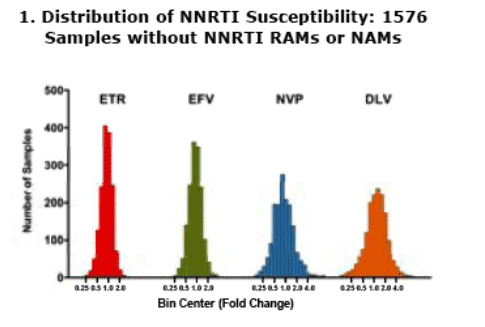
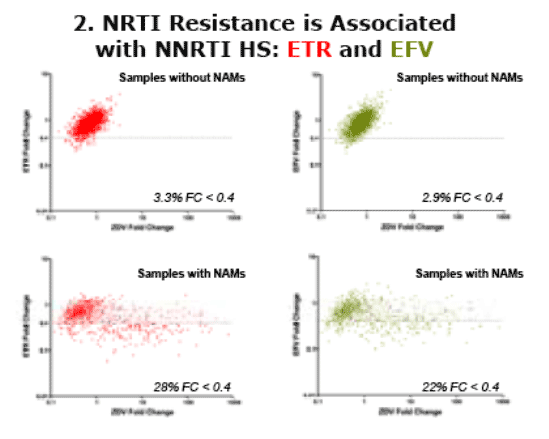
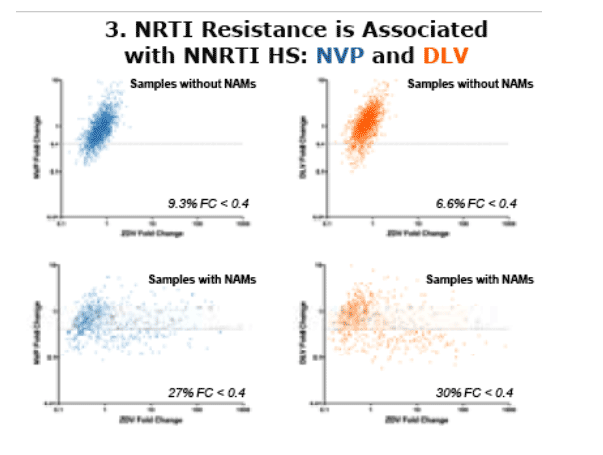

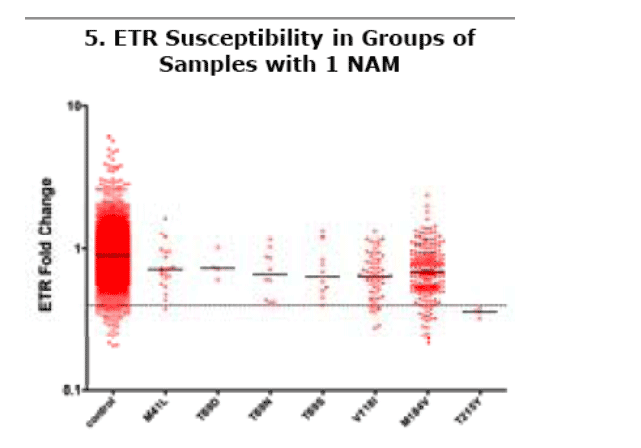

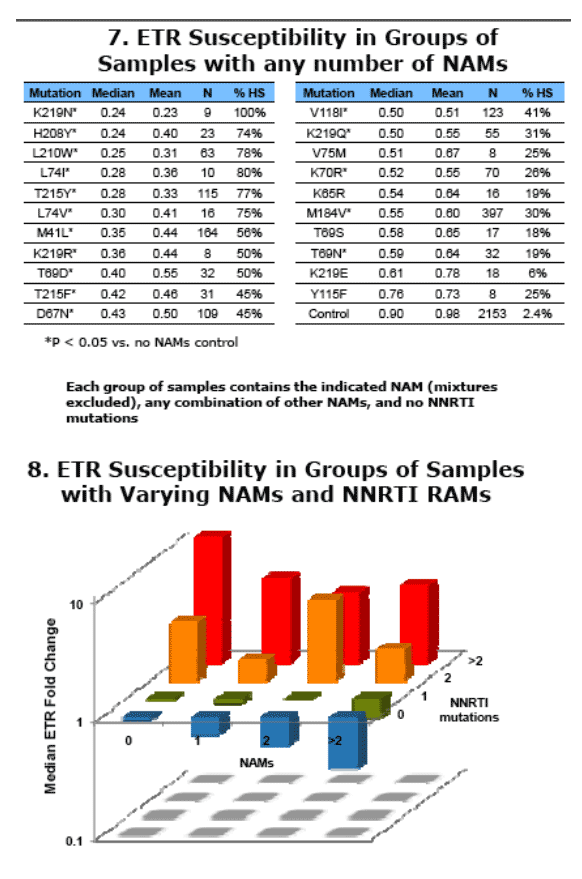
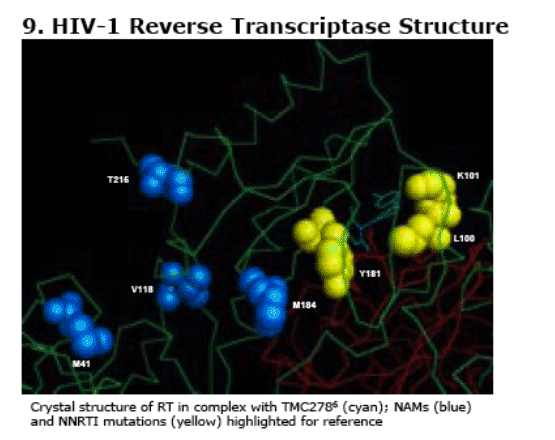
REFERENCES
1. Whitcomb, J. M., et al. (2002). "Hypersusceptibility to non-nucleoside reverse transcriptase inhibitors in HIV-1: clinical, phenotypic and genotypic correlates." AIDS 16(15): F41-7.
2. Haubrich, R. H., et al. (2002). "The clinical relevance of non-nucleoside reverse transcriptase inhibitor hypersusceptibility: a prospective cohort analysis." AIDS 16(15): F33-40.
3. Shulman, N., et al. (2001). "Phenotypic hypersusceptibility to non-nucleoside reverse transcriptase inhibitors in treatment-experienced HIV-infected patients: impact on virological response to efavirenz-based therapy." AIDS 15(9): 1125-32.
4. Mellors, J., et al. (2002). EfavirenzHypersusceptibility Improves Virologic Response to Multidrug Salvage Regimens in ACTG 398. 9th Conference on Retroviruses and Opportunistic Infections.
5. Shulman, N. S., et al. (2004). "Genetic correlates of efavirenz hypersusceptibility." AIDS 18(13): 1781-5.
6. Das, K. et al. (2008). "High-resolution structures of HIV-1 reverse transcriptase/TMC278 complexes: strategic flexibility explains potency against resistance mutations." PNAS 105(5): 1466-71.
|
| |
|
 |
 |
|
|